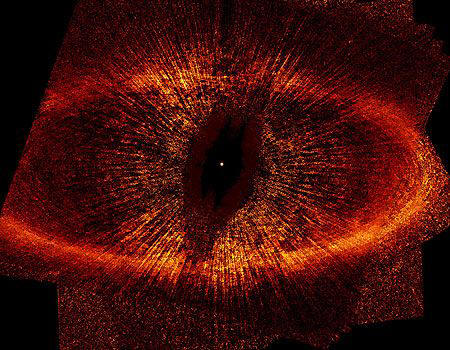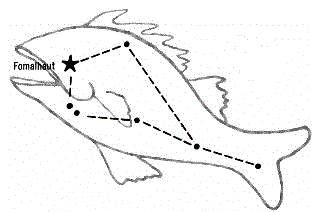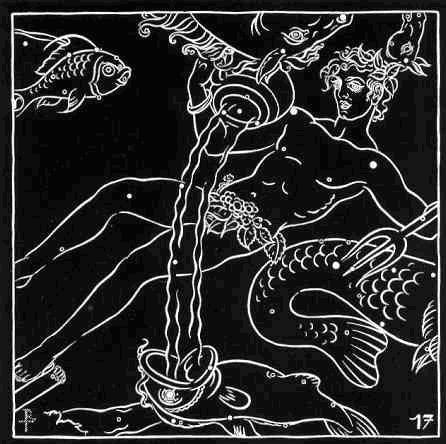Fomalhaut:
The Eye of Odinby Peter Krüger
©2012

Picture of Fomalhaut taken from the Hubble telescope in 2008
|
Allt veit ek, Óðinn, |
I know it all Odin: where you hid your eye, in the much-famed fountain of Mimir; Mimir sips mead every morning from Corpse-father's pledge; Do you know yet, or what? [Andy Orchard translation, 2011] |
In the essay Mimir and the Cup of Aquarius, we have seen already that it is possible to parallel Mimir’s well with the urn of Aquarius. In the pictures of star maps a mighty stream (sometimes seen as one and sometimes as two streams) are flowing down into the constellation of Pisces Australis, the Southern Fish.
This waterfall and the fish hiding in it have already been discussed in the essay Loki, the Salmon. It proves that the constellation of Pisces Australis was known in the Northern tradition, even though it is not visible north of 50 degrees latitude.

The main star of Pisces Australis is called Fomalhaut (Arabic: Fum al Hut, 'the mouth of the fish'). Pisces Australis is a very faint constellation and Fomalhaut is the only bright star in this region of sky at all. This is the reason that he is also named the Lonely One, the Solitary One, the Loneliest Star and the Autumn Star. This solitary star, deep below the stream flowing out of the urn of Aquarius is therefore a perfect candidate to represent the eye of Odin deep in the well of Mimir. In about 2500 BC, Fomalhaut helped mark the location of the winter solstice, meaning that it helped to define the location in the sky where the sun crossed the meridian at the first day of winter.
According to Richard Allen, Fomalhaut was one of the four guardians of the heavens to the ancient Persians, and given the name of Hastorang. The other guardians were Aldebaran in Taurus, Antares in Scorpi0, and Regulus in Leo marking together the four cardinal points of the year, the equinoxes and solstices.
We have seen that Aldebaran is part of Taurus representing Thor, so we find the guardian function also in the Eddic texts (Thor being the guardian of Asgard against the giants). Also Antares as part of Scorpio (the hellhound Garm or Fenrir in Eddic texts) has a guardian function like the Greek Cerberus for their Hades. It will be shown in another essay that Antares also represents Modgud, the guardian of the Gjallarbru, and Thökk, the giantess who refuses to let Balder return from the netherworld.
In the case of Fomalhaut, the Eye of Odin, the role as a guardian might have shifted with the point of the winter solstice due to precession to the nearby Capricorn. This constellation has been identified in the essay Capricorn: Heimdall with Heimdall, the guardian of the Aesir. He is described as the whitest of the Aesir and the name Heimdallr (‘the one who illuminates the world’) itself might still be an echo of a former connection to Fomalhaut as this bright star has a very white color (in sharp contrast to Antares and Aldebaran, both being bright red).
In 2008 the Hubble telescope has provided spectacular pictures of Formalhaut leading the press to compare it to the Great Eye of Sauron in the famous trilogy The Lord of The Rings written from J.R.R. Tolkien (see picture above).
It’s fascinating to see how this star got back its original meaning as depicting an eye by the help of modern technology.
